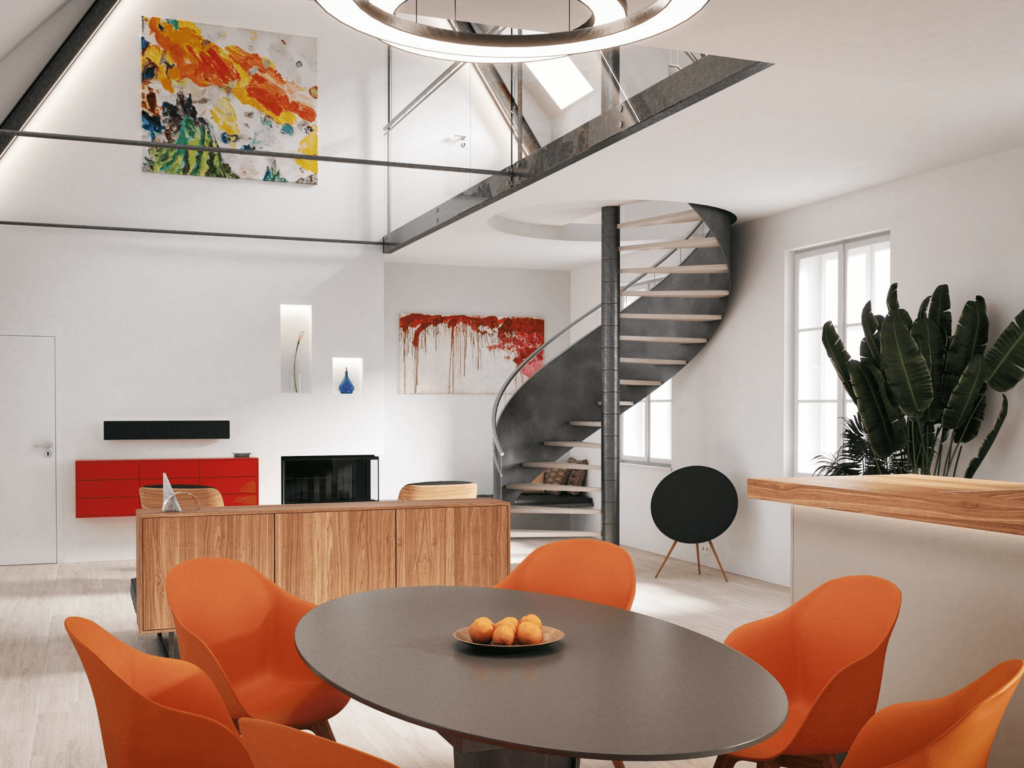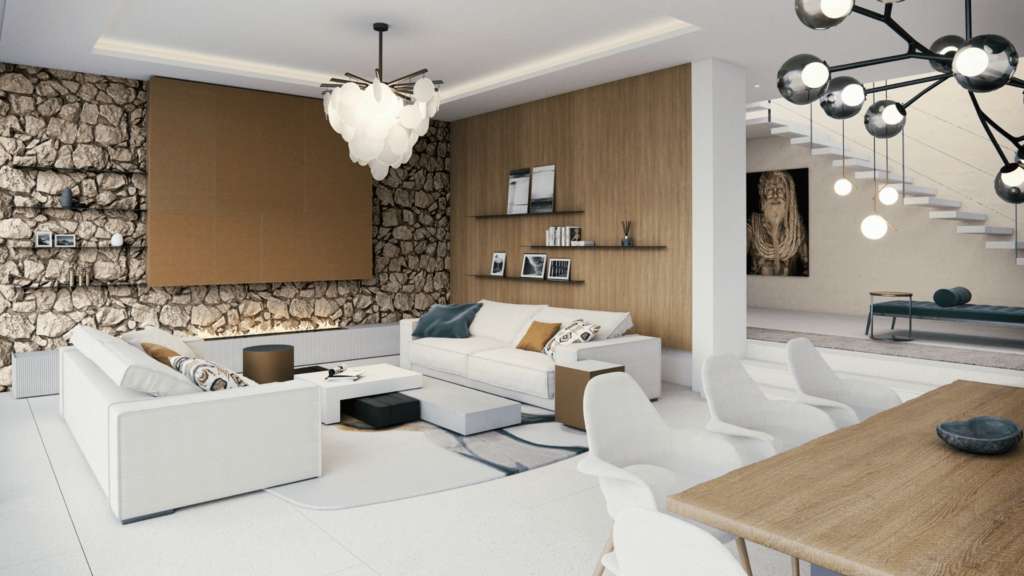Look no further than the revolutionary impact of interior visualization!
This groundbreaking technology has transformed the design industry, empowering designers to create stunningly realistic renderings of their designs. And the numbers speak for themselves.
According to a recent survey, the global 3D rendering services market is expected to reach $61,651.18 million by 2026, with a CAGR of 28.10%.
Moreover, by 2025, the architectural visualization demand is expected to reach $5.72 billion, with the European market expected to achieve growth at a CAGR of 22.7%.
In addition, the visualization and application segment accounted for 35% of the 3D rendering market share, with strong efforts being made to introduce visualization in response to growing demands and reducing risks associated with final products.
With its ability to save time and money on costly revisions and prototypes, interior visualization is the way of the future. Join us as we explore the incredible potential of this groundbreaking technology.
How Does Interior Visualization Work?
So how does interior visualization work? It’s like having a superpower that allows you to step into a virtual world of your own home before it’s even built.
With sophisticated software, designers can create 3D models of their designs that can be rendered into photo-realistic images and videos, taking you on a breathtaking virtual tour of your future home.
The process of creating these 3D models involves a series of steps. Designers start by creating a digital representation of the space they are designing, mapping out the layout, and adding basic architectural features.
From there, they can begin to add furniture, decor, and all the other elements necessary to create a realistic representation of the final design.
But that’s not all – through interior visualization, designers can add various materials such as wood, metal, fabric, and stone to surfaces, giving them texture and depth and playing with lighting to create the perfect ambiance and mood for the space.
The end result is a stunningly realistic 3D visualization that can help clients visualize the final product and make changes and adjustments along the way.
Benefits of Using Interior Visualization in Home Design
The benefits of using interior visualization in home design are endless — no more guesswork or surprises.
With 3D renderings, you can see exactly what your finished dream space will look like, giving you the power to make informed decisions about your design choices.
And with faster design cycles, you can make changes and revisions to your project in real-time, saving both time and money.

ust imagine being able to step inside your dream home before a single brick is laid, to see every color, texture, and material in perfect clarity.
For instance, by visualizing a living room with a different color scheme, you can either make changes to the design decision or feel more confident about your choices.
Interior visualization also allows designers to accurately estimate the cost of a project, which helps clients make informed decisions about the materials and furnishings used in a design.
Moreover, by providing clients with realistic 3D renderings of their design, designers can help clients visualize and experience their finished space before construction even begins, resulting in higher satisfaction and better outcomes for both parties.
In turn, this ensures that everyone is on the same page and working towards the same vision for the space, avoiding misunderstandings and keeping the project on track in the process.
Changing the Way Designers Approach Their Work
As technology advances, so too does the world of interior design. Nowadays, interior visualization has become an indispensable aspect of the design process.
But why is this process so essential to modern design? The answer is simple: interior visualization facilitates a more efficient design process.
Designers can make changes and revisions to their projects with ease, allowing them to iterate ideas faster, refine their designs more effectively, and ultimately create better outcomes for their clients.
For example, a designer can quickly and easily change the color of a sofa or swap out a piece of artwork to see how it impacts the overall look and feel of a space.

Furthermore, interior visualization sparks enhanced creativity in designers. With the ability to experiment with different design ideas and concepts, designers are not limited by physical materials or budget constraints.
This freedom leads to more imaginative and innovative ideas that push the boundaries of what is possible in design. Imagine designing a space that looks like it’s straight out of a sci-fi movie or a fairy tale castle – all made possible with interior visualization.
But the benefits don’t stop there. Interior visualization also allows designers to plan and coordinate every aspect of the design with incredible accuracy.
By creating detailed 3D models of a living space, designers can ensure that everything from furniture placement to lighting and materials is perfectly aligned with the client’s vision for the space.
The Future of Interior Visualization in the Home Design Industry
As we step forward into the future, it is clear that interior visualization will continue to play a critical role in shaping the home design industry. So, what exciting developments can we expect to see in this field?
One of the most thrilling advancements in interior visualization is the integration of virtual reality (VR) technology.
Imagine stepping into a virtual reality simulation of your dream living room, where you can adjust the furniture, change the color of the walls, and even see how different lighting options would look in real-time. With VR, this is now possible.
Another promising development is the use of augmented reality (AR) technology. AR allows designers to overlay digital images and information onto the real world, providing clients with a more interactive and engaging experience.
For example, clients can use their smartphones or tablets to view a digital rendering of their space and see how different furniture options would look in real life, all without having to physically move anything around.
As interior visualization technology continues to evolve, we can expect to see more advanced uses of artificial intelligence (AI) in the design process. AI can be used to analyze client preferences and behavior, helping designers create more personalized and customized designs.
Finally, as interior visualization technology becomes more advanced and user-friendly, we can expect to see greater accessibility for both designers and clients.
This could include the development of more affordable and user-friendly software tools, as well as the creation of online platforms that allow designers to connect with clients from anywhere in the world.
Wrapping Up
In conclusion, interior visualization is a game-changing technology that has already had a significant impact on the home design industry.
By providing designers with a powerful tool to communicate their ideas effectively and efficiently, interior visualization has revolutionized the design process, leading to faster, more accurate, and more creative outcomes.
And the best part about it? You can do all of this while saving money by avoiding costly mistakes and experimenting with different design options.
So why settle for a home that doesn’t reflect your style and personality when you can visualize and create the home of your dreams?
As a 3D visualization agency, we are dedicated to staying at the forefront of the industry and providing our clients with the most innovative solutions for their home design needs.
If you are interested in learning more about how interior visualization can transform your home design project, contact us today and take the first step towards creating the home of your dreams.